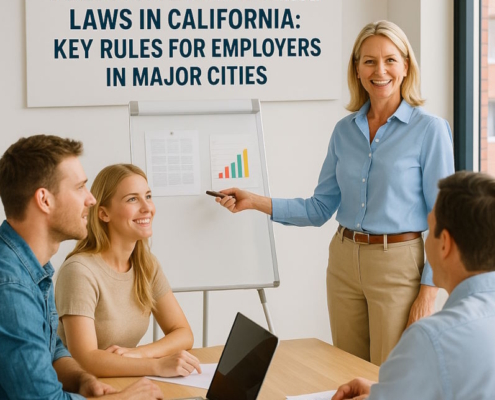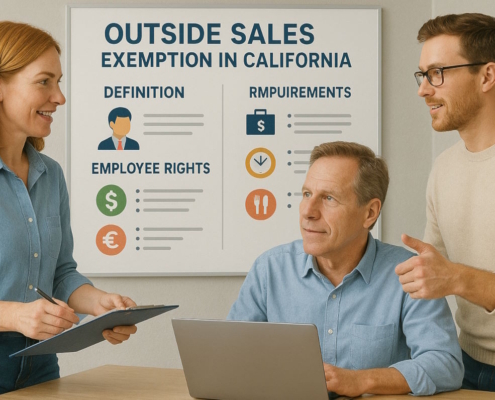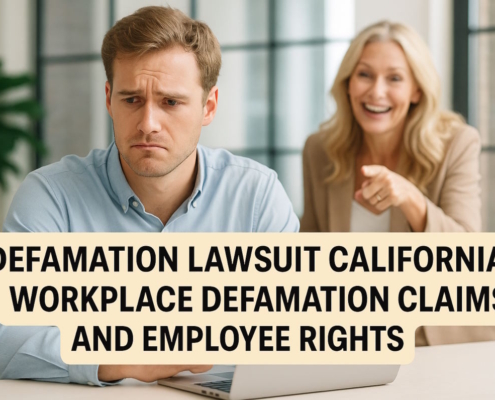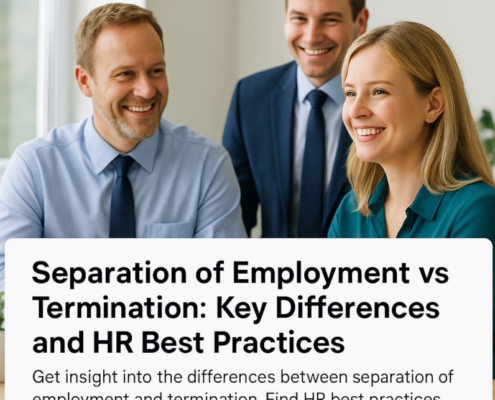Introduction
Misclassification of nonexempt workers by an employer who deems them to be exempt from overtime pay in California has been the basis of some of the most significant cases of class action. The exempt vs. nonexempt classifications are covered in this section, along with California’s minimum wage and work duties requirements.
Nonexempt versus Exempt Classification of California Employees
1. Duties Test
An employee in California often needs to pass a stringent responsibilities test in order to be classified as an exempt worker. For the majority of exemptions, an employee must undertake exempt job responsibilities for more than half of their working hours.
2. Job Title Does Not Apply
The exempt vs nonexempt status of a California employee is not determined by their job title. If a person’s real responsibilities don’t fit the criteria for any of the exemptions, they might not be eligible as an exempt employee, even if they have an appealing job title.
3. The Decision of the Labor Commissioner
The California Labor Commissioner reviews the work that the employee does during the workweek to ascertain whether the employee is predominantly engaged in exempt employment.
4. Considerations for Salary
The California Exempt Employee Salary 2025 threshold plays a critical role. In general, exempt workers are required to make at least double the state’s minimum wage per month for full-time work. An employee is not exempt just because they get a salary; it also does not alter the need to abide by wage and hour regulations.
Employees who are exempt under California Exempt Employee Salary 2025 rules must also consistently exercise discretion & independent judgment.
5. Independent judgment and discretion
The majority of California workers who are exempt typically and consistently use discretion & independent judgment throughout their work. Comparing and assessing potential actions and making a decision after taking into account a number of alternatives are components of discretion and autonomous judgment.
6. Federal Salary Basis Regulations
Federal law nevertheless merits some consideration, even though California law has stricter requirements. Although the federal and state exemption criteria differ, the Department of Labor Enforcement has stated that in cases where there is no controversy, the federal laws may be used as a reference.
7. Withholdings from Exempt Workers’ Salary
For exempt workers, the “salary test” mandates that, with very few exceptions, the entire weekly compensation be paid for each week that work is completed. Salary deductions made to an exempt employee’s pay are therefore restricted.
8. Unauthorized Deductions
Deductions that are prohibited under California Exempt Employee Salary 2025 rules:
Work Unavailable: If exempt personnel are prepared, willing, and able to work, do not subtract them from their earnings when work is absent due to operational issues. A full week’s pay is therefore due to any exempt worker who performed on Monday of the week in question, and July 4 occurs on a Tuesday, and the business is closed for the remainder of the week.
Federal vs. State Exemptions
When it comes to granting exemptions to workers who carry out particular job functions, the state and federal governments differ.
California Employee Exemptions
1. Executive Exemption
Typically, managers are granted the executive exemption. Managers must still fulfill the conditions for the exemption, though. If they are unable to meet any of the other exemptions, they will have to be categorized as nonexempt.
2. Administrative Exemption
Many different types of employees are covered by the administrative exemption. However, not all workers who perform administrative tasks will qualify for the administrative exemption; as a result, they could need to be categorized as nonexempt.
3. Professional Employees’ Exemption
Even if an employee may be regarded as a “professional” in most cases, they must fulfill certain legal conditions in order to be eligible for a professional exemption.
4. Exemption for Computer Professionals
If they perform certain high-level technology-related tasks, like software design or systems analysis, some computer professionals are free from overtime. The state of California determines the exact hourly, monthly, or annual pay that is required by law. They must meet the salary threshold under the California Exempt Employee Salary 2025.
5. Salesperson Exemption
Salespeople are classified as either outside or inside salespeople in order to determine their exempt or nonexempt status. Each is subject to a different set of exempt status requirements.
6. Exemption for Artists
In California, very few people are eligible for exemption as individuals in artistic professions because the majority of people who have adequate control over the type of job they do and the hours they work are self-employed.
Damages from misclassification
If an employee is mistakenly labeled as “exempt,” the business can be responsible for compensating the worker for overtime that was not paid. For every meal break that the employee was refused, the employer might also be required to pay them an hour’s wages.
An employer may be held accountable to an employee for the following if they violate the California Law:
- The lost income, which includes interest,
- Affordable legal fees, and
- An extra sum equivalent to liquidated damages
Given the rising thresholds defined under California Exempt Employee Salary 2025, it is vital for employers to reassess classifications whenever the law changes. Employers should also routinely review job descriptions and the tasks carried out by exempt personnel.
In many misclassification instances, plaintiffs claim that despite being categorized as exempt, they invested most of their time doing non-exempt assignments and are therefore entitled to unpaid overtime compensation, meal & rest break premiums, and other penalties and damages. It is the employer’s responsibility to demonstrate that the worker was appropriately designated as exempt.
It is the concern of the employers that they ensure that the employee fulfills all the criteria stipulated by the federal government as well as the state government before they designate them exempt. When an employee comes under the protection of both the state and federal laws but fails to satisfy both sets of requirements, then the company should consult legal consultants on how to classify the individual.































